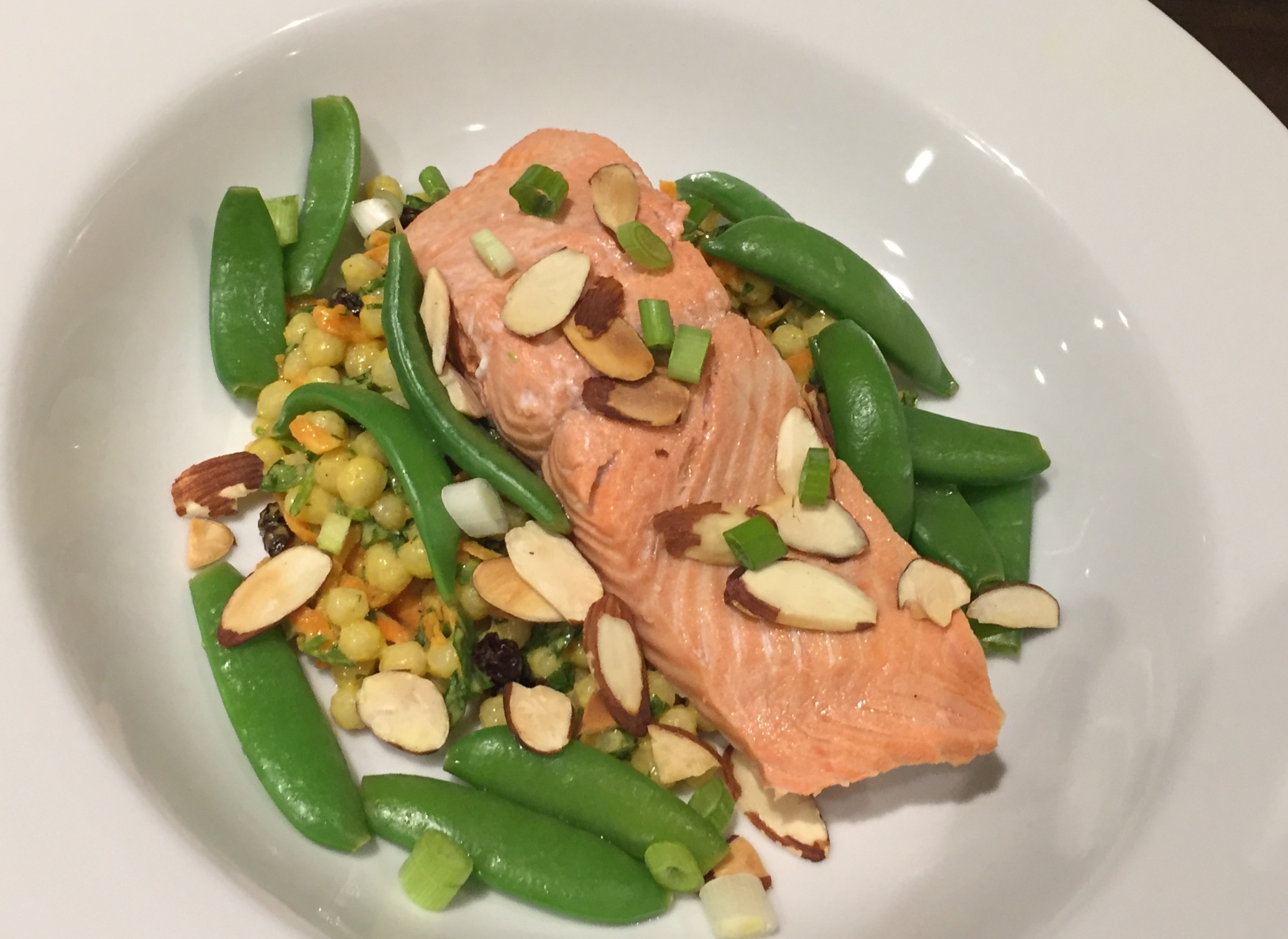Omega 3s-The Fats We Love

Omega-3s get a lot of notoriety – and for good reason! Not only is one of them essential for good health, but we don’t get enough of them in our diets.
Omega-3s are a kind of fat. Fats are not just a storable source of 9 calories per gram. Different fats are used by our bodies for different essential functions. They’re part of the membranes that surround each cell, and are especially important in the brain and nerves.
They can mediate the effect of our immune cells as well as influence the production of neurotransmitters and hormones. Omega-3s are anti-inflammatory, and have health benefits for the heart, brain, and our mental health. They are even needed for skin health!
In fact, it’s thought that the reduced intake of omega-3s over the last few generations is one of the reasons for the increase in many of the chronic diseases we see today.
In this conversation, we’ll take a closer look at the anti-inflammatory component and how to get Omega 3 from food.
Let’s look at what exactly omega-3s are, why they’re so good for our health, and how to get enough of these lovable fats.
What are omega-3s?
There are several types of fats (a.k.a. fatty acids). They’re broken down into two main categories: saturated and unsaturated. Unsaturated fatty acids are further broken down into monounsaturated (MUFAs) and polyunsaturated (PUFAs).
The main types of PUFAs are omega-3s and omega-6s. We don’t hear much about omega-6s because we tend to get too much of these in our diet already. Omega-6s are found in meat, poultry, and many common seed oils like corn and sunflower. So, the focus has been to educate people to swap out some of those omega-6s to get more omega-3s like our ancestors did.
Three of the omega-3 fatty acids are particularly important for health. They are:
- Alpha-linolenic acid (ALA) – essential fatty acid
- Eicosapentaenoic acid (EPA) – biologically active fatty acid
- Docosahexaenoic acid (DHA) – biologically active fatty acid
ALA is essential – literally essential for health, just like essential vitamins and minerals. This is because the body can’t create it from other nutrients. It is this omega-3 that the body needs in order to create the biologically active EPA and DHA. In fact, research shows that the primary role of ALA is to be the building block for EPA and DHA.
What I mean by “biologically active” is that EPA and DHA are the forms of omega-3s that provide the health benefits. They’re the ones that are active in the body.
ALA is the plant-based omega-3 and is found in many seeds like flax, hemp, and chia. It’s also found in walnuts, and oils from olives, canola, and soy.
EPA and DHA, on the other hand, are found in seafood, especially oily fish. They are also found in algae, which is a vegetarian source.
FUN FACT: Fish have the biologically active forms of omega-3s because they eat the algae and store extra EPA and DHA in their fat.
The conversion of plant-based essential ALA into the biologically active EPA and DHA is complex and requires several steps and enzymes. Unfortunately, the process isn’t very efficient. The conversion rate of ALA to EPA is about 8-12%, while the conversion to DHA is only about 1%. Some studies show that women may have slightly higher conversion rates compared to men.
Despite all of this biochemistry, the real question is how do they work in the body and what are these health benefits?
The health benefits of omega-3s
There is a lot of research about the health benefits of omega-3 fatty acids. Things like anti-inflammation, heart and brain health, as well as better moods. They’re even good for our skin!
Omega-3s and anti-inflammation
There are many inflammatory diseases like allergies, asthma, arthritis, and autoimmune diseases. There are also many other diseases that may not be inflammatory per se, but have a substantial inflammatory component. These include diabetes, obesity, cancer, heart disease, depression, and neurodegenerative diseases such as Alzheimer’s.
Many of these conditions are becoming more common. Reasons include allergens, infections, environmental and dietary toxins, and even stress. As mentioned earlier, one of these reasons is our inflammatory diets.
Yes! What you eat can increase or decrease the amount of inflammation in your body.
An inflammatory diet contains a much higher intake of omega-6s compared with omega-3s. In fact, the higher the intake of certain omega-6s, the higher the production of certain inflammatory molecules.
Many animal and some clinical studies have found reduced inflammation when omega-3 supplements were taken.
A review of 30 studies showed that fish oil supplements reduced the pain of arthritis, particularly rheumatoid arthritis.
How do omega-3s reduce inflammation?
Two ways. First, they are used to create anti-inflammatory molecules themselves. Second, they can inhibit some of the mechanisms that cause inflammation in the first place.
Omega-3s are used to produce certain anti-inflammatory molecules (e.g. prostaglandins, resolvins, etc.) that combat inflammation.
They also reduce the production of enzymes that create inflammatory molecules, and can even reduce the expression of certain inflammatory genes.
Omega-3s become incorporated into the membranes of immune cells and affect their inflammatory response.
Some animal studies even show that omega-3s can reduce inflammation by helping to reduce obesity!
How to get enough omega-3s from food
In order to get the health benefits you have to regularly eat enough foods that are high in omega-3s.
It’s thought that our ancestral diets included approximately equal amounts of omega-3s and omega-6s. Now, our intake of omega-6s is up to 20x higher than our intake of omega-3s. This is why there is such an emphasis on getting enough omega-3s.
When it comes to plant-based sources of omega-3s, flax is the winner! Up to half of flax’s total fatty acids are the essential omega-3 ALA. Canola, walnuts, and soy, are less concentrated sources of ALA, with about 10% of their fatty acids as ALA.
To eat the recommended amount of omega-3s have at least two servings of fatty fish each week. Fatty fish include salmon, mackerel, herring, and sardines. This is a recommendation from the World Health Organization, as well as other health authorities.
In the US, there have been consistent recommendations to increase fish intake for almost 20 years. Despite this the average American still only eats about 1.3 servings of fish per week.
Eating fish and seafood gives you a lot more nutrition than simply taking a supplement. They contain protein, vitamins D and B12, as well as the minerals iodine, selenium, potassium, and magnesium, to name a few.
When it comes to choosing fish, bigger is not better! Large fish that feed on smaller fish have higher concentrations of toxins in their fat. To reduce your intake of things like methyl mercury and organic pollutants, limit your intake of tilefish, king mackerel, shark, and swordfish. And anyone who is pregnant, breastfeeding, or a child, should avoid these types of fish altogether.
There are also non-fish sources of omega-3s! Some foods are fortified with omega-3 oils. Some baked goods, pastas, dairy, eggs, dressings, and spreads may contain added flax, algal, or fish oils. Omega-3 eggs are produced by hens who’ve had flax seeds, chia seeds, and/or fish oil added to their feed. In fact, hens fed the plant-based ALA produce eggs with ALA, and those fed fish oil produced eggs with EPA & DHA.
Check your labels!
Next time I’ll talk about Omega 3s and brain health and what to do if you are not getting enough Omega 3s in your diet.
References available on request
Important small print you must read:
Disclaimer
The information contained herein is NOT intended as medical advice, nor is it intended to replace the care of a qualified health professional. Always consult your doctor for all diagnoses, treatments, and cures for any diseases or conditions, as well as before changing your health care regimen.

